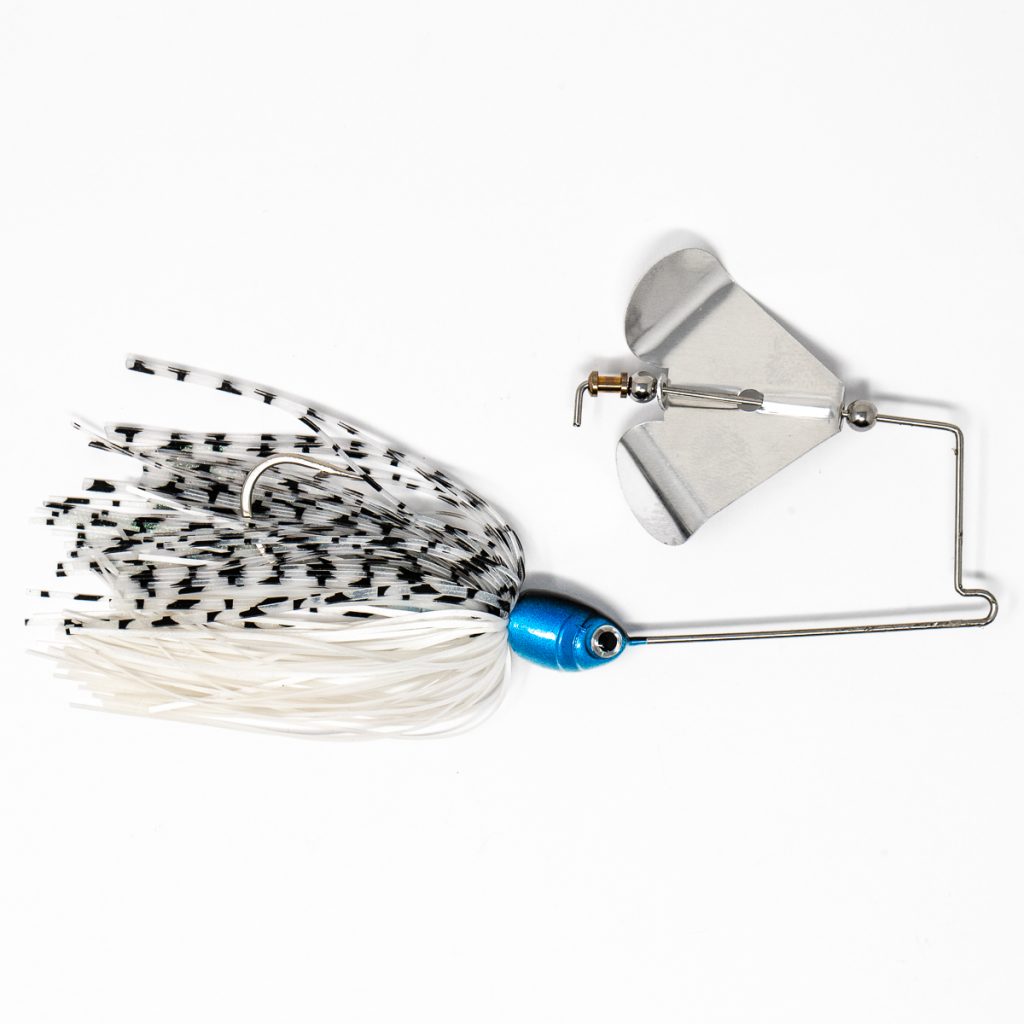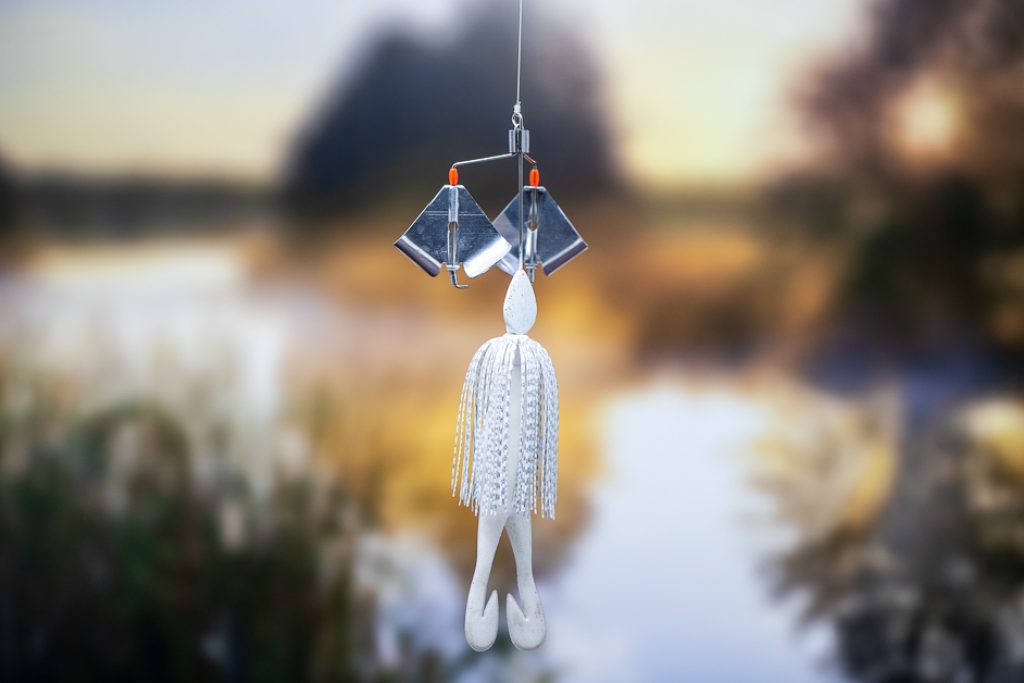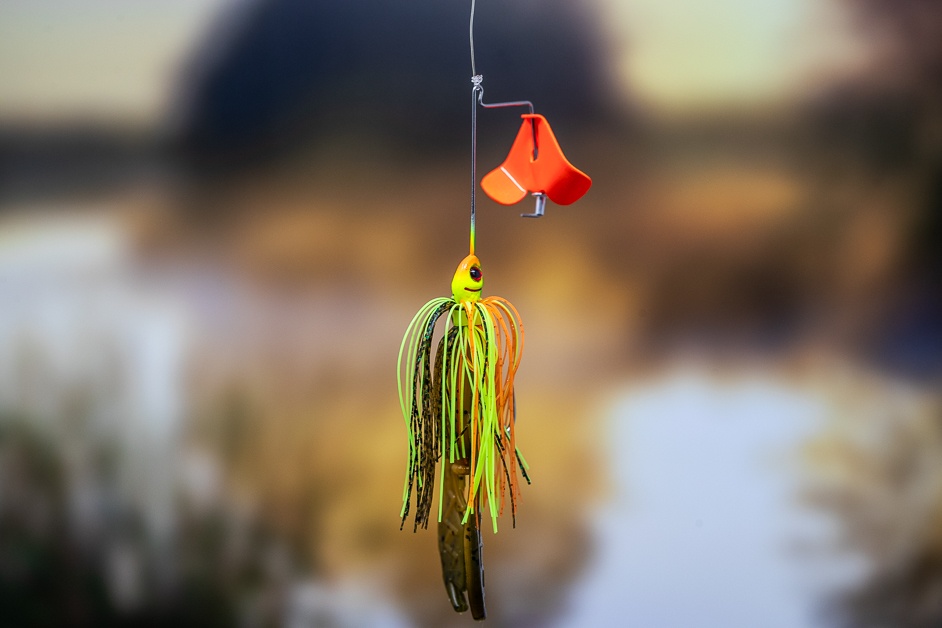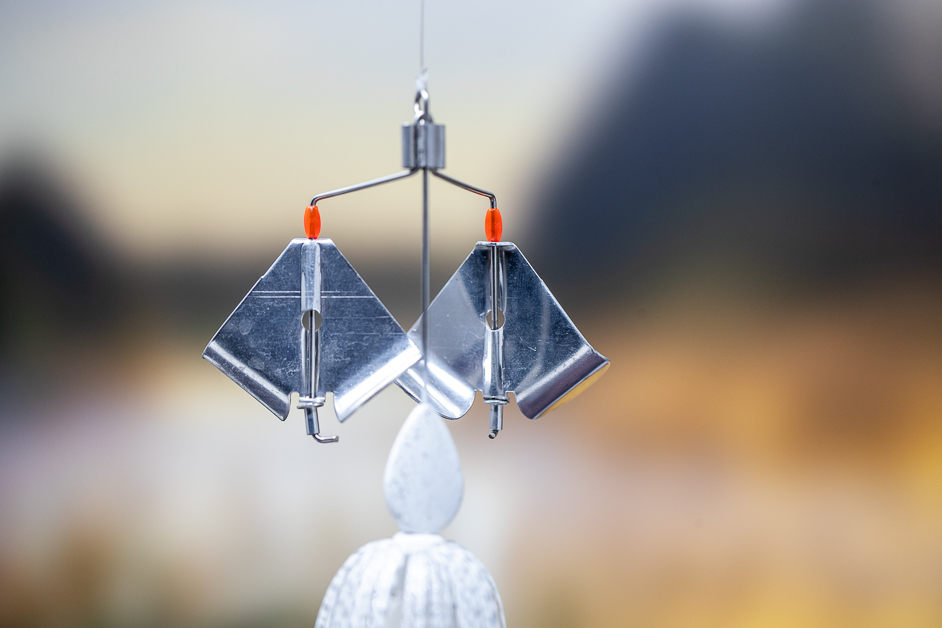Buzzbait fishing has a lot of benefits when it comes to attracting bass. They have a wiggling skirt, flashing blades, and make a soft, plopping sound on the water when they land. Because bass tend to be curious and aggressive fish, this type of lure seems almost guaranteed to work.
While it does have all the makings of a great way to catch bass, the more knowledge you have will make it more effective. It doesn’t matter how great your lures are if you are not using them to their full advantage. This ultimate guide to buzzbait fishing will help you make the most out of your experience.
What is Buzzbait Fishing?
Buzzbaits are a type of wire bait because they are built around metal-wire frames. Typically, they are molded into a J-shape with a blade on the shorter wire on the top. Buzzbaits are a topwater bait, but unlike most others in this category, they sink. You are able to keep them on the surface because of the blade attached to the top. It lifts it up during the retrieve. This motion makes a buzzing action and a bubble trail which is what attracts the bass in. The hook part has a lead-head on the bottom. A bend at the front corner of the lure is where it is tied up.
Typical buzzbaits have a silicone skirt and a lead keeper so you can attach a toad, craw, or swimbait trailer. Some people have started removing the skirt and putting a soft toad over the head of the lure. With this in mind, some buzzbaits have metal keepers that make it easier to put the plastic toad on that way. It is up to personal preference which you decide to do.
The best colors for buzzbaits are black or another darker shade if the sky is overcast. If it is sunny, then white is a better color. If you want to imitate a bream, then green is the best option. There are also varying sizes when it comes to buzzbaits. The most common size is half-ounce, but there are 3/8 – and 1/4 -ounce variants.
While size may be important, more important than size is the blade size and the size of the wireframe. When the blade size is big, it will make more of a disturbance on the surface. Smaller blades are better if you want more control because they are easier to skip.
You may find that you like different buzzbaits for different situations, so it is important to try different ones to see which you prefer. There are also double-bladed buzzbaits that will create a different disturbance on the water. In-line buzzbaits are uncommon, but their straighter design may have their uses for you.
Best Buzzbait Setup
When it comes to buzzbait fishing, it is important to have a rod that is good for throwing them. Typically this means a medium-heavy or heavy baitcasting rod will be the best option. There are some professionals that prefer to use a frog rod, so that is also an option. You can also just use a jig rod if that is what you have.
You will want to use a heavier rod if you are fishing around grass or other hazards that a bass on your line might get caught in. If you are skipping docks or need greater accuracy, then you will want to go with a shorter rod. If there is no need for that much accuracy, then a rod that is 7’ to 7’3” long is better for making longer casts.
When you are considering a fishing line, a braided fishing line is typically the best option. It is strong enough to not break or stretch during use. The strength resistance should pass a 50- to 65-pound test. If you use a fluorocarbon that ranges between 15- 20-pounds would also work.
The faster retrieve speed you have on your reel, the easier it is to work the buzzbait’s turning blade. It also means that you can wind it in faster between casts. You should be using a high-speed reel, and that means at least a 7:1 retrieve ratio. If you can use an 8:1 ratio, that would be even better.
How to Fish with Buzzbait
Fishing with a buzzbait is not difficult. All you have to do is cast it out, but pay special attention to when it lands. When it lands, you need to start a quick retrieve so the blade will turn. The faster you can make the blade spin, the faster you can start attracting the bass.
When the buzzbait is agitating the surface of the water, you should start a slow retrieve to keep the tempo steady and keep it where it is. You can also choose to burn the bait by using a high-speed retrieve. You may want to mix up the speed of retrieval and direction and contact to lure in a fish. It will take a little time and playing around with it to find what works best for you and the spot in which you fish.
One thing that you should keep in mind is that bass might swipe at the buzzbait instead of actually latching on to it. If you wait for just a second after the initial bit before setting the hook, that will help you hook more fish because they will have a chance to engulf the lure. You may also want to use a trailer hood to catch more fish.
When to Fish with Buzzbait
You should pick apart areas that lend themselves to success with buzzbaits using repeated casts. These areas include those with loose covers like willow grass, reeds, flooded buses, standing timber, or dock posts. Buzzbaits work well in these areas because they are used to cover water.
There are many different situations where using a buzzbait is beneficial. In the past, professionals would only use them during the morning hours or in other conditions where the light was low, but that has changed. Now they are used during all times of the day and in all seasons.
Being aware of the surroundings and conditions will help you to know if buzzbaits are a good choice. It will also inform you what kind of buzzbait would be best and what techniques to use. During the spring, the bass starts moving up during the warmer parts of the day when the water has just reached the mid-60s. When these are the conditions, casting a buzzbait in flooded bushes will help you catch some pre-spawn bass.
If the bream are spawning on a sunny day along the banks of a river, then buzzbait can be used to catch bass that has come into the shallows. This would happen during the peak of summer. Buzzbait can also be used in the fall if you see baitfish along the shoreline or in the shallows.
Best Lure for Buzzbait Fishing
There are a few different kinds of buzzbait lures that you may want to try. The most common and basic lure is the single prop non-clacker lure. It has a single propeller and no clacker. Even though it is basic, it can be very effective. Sometimes too much noise might work against you, especially during calm water conditions when the sound will travel further under the water. It is also a great way to start if you are not sure what the bass are going to want in a particular area.
There is also a single prop clacker lure. A clacker was developed when people started tweaking with the original design of the buzzbait. A clacker hangs on a hinge and drapes over the propeller. It is made of metal, so when the prop spins it makes a noise. It is a little bit like putting a baseball card in the spokes of bike tires. The single prop clackers are the loudest buzzbaits available. Sometimes this much noise is important to get the bass to strike. This is especially true when the water is rough and the sound doesn’t travel as far.
Another option is the double prop lure. These lures have two propellers that are attached parallel to each other. The appeal of this type of lure is that you can run them flowers. The dual blade gives twice the resistance in the water while also making twice the sound and agitation of the water. They also run very straight, so that is another advantage. You usually have to keep adjusting to make sure they are running straight, but the double prop helps it to stay balanced so you don’t have to work as hard.
Using a buzzbait while you fish for bass isn’t complicated, but it does take a little time to get used to them. Trying different kinds of lures and techniques will help you to become familiar with what works best for you.
















